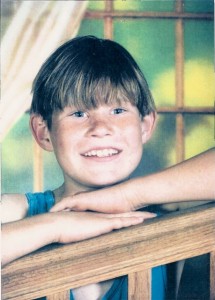
Professor Lawrence C. Marshall
On Sunday afternoon, October 14, I participated in a public forum at Santa Rosa’s Shomrei Torah Synagogue. The focus was on two propositions that will appear on California’s November ballot. Proposition 34, if passed, will replace California’s death penalty with a sentence of life without the possibility of parole. Proposition 36 would amend the Three Strikes and You’re Out law by requiring that the third strike is a serious or violent felony.
I was invited to support No on Prop 36, as I believe that the Three Strikes and You’re Out law should not be amended. Defense attorney and ACLU of Northern California board member Steve Fabian represented Yes on Prop 36. Kent Scheidegger, Legal Director of the Criminal Justice Legal Foundation argued against Prop 34. The argument to overturn the death penalty was represented by Stanford University Professor and legal clinic Director Lawrence C. Marshall. Congregation Shomrei Torah Rabbi George Gittleman concluded the program with reflections on the death penalty in Judaism.
Overall it was an educational and informative forum that was well attended by an enthusiastic audience. However, the incident that stood out the most was not witnessed by the audience as it occurred after the forum was concluded.
Throughout the years I have witnessed numerous interactions between crime victims and those who advocate on behalf of death row inmates. These criminal apologists make impassioned, and often times very compelling arguments on behalf of remorseless killers or other serious and violent criminals; yet they fail to look me in the eye, rarely shake my hand and never reference the circumstances that have brought me to the podium.
Proposition 36 was presented first. Mr. Fabian made his case for ten minutes and then I made mine. We were each given a five minute rebuttal and then took questions from the audience. Both sides were given equal weight and I hope that I changed some minds toward my position.
The same format was followed by the Prop 34 discussion. In his opening statement, with obvious emotion and in the throes of passion Professor Marshall said that life sentences give society “every bit of protection” it could ask for without risking “the cost of executing innocent people.” This despite the fact that Governor Brown just signed Senate Bill 9, which can overturn prison sentences of life without parole for 309 convicted killers. He also seems unaware that Governor Brown, a death penalty opponent, recently said that, “There are no innocent inmates on California’s death row”. At one point in his opening, Professor Marshall even referenced my commentary that, “You can’t blame 3-strikes for racial disparities, because they exist throughout the criminal justice system.”
I don’t want to minimize Mr. Scheidegger’s opposition to Prop 34 because it was eloquent, strong, and based upon facts, but this about things that weren’t said, not things that were said.
During his rebuttal Professor Marshall made an impassioned plea for death row inmates when he said, “They are us, they’re our children. We are a community.” He obviously felt very differently about me because, although he was sitting a mere three feet away from me he didn’t look me in the eye, didn’t shake my hand and didn’t acknowledge the loss of my child at the hands of one of “his” children. In fact, as soon as the Rabbi had finished his remarks at the end of the program Professor Marshall bolted to the back of the room in what seemed to me a desperate attempt to avoid meeting me.
I know that death penalty opponents don’t like people like me. I remind them of the heinous nature of their constituency: cop killers, baby killers, serial killers, and mass murderers. I represent a truth that they would rather deny. After all, how can somebody evoke the humanity and brotherhood of a blood thirsty psychopath when the fruit of their murderous intent is sitting but a few feet away?
If Professor Marshall has empathy then it is misplaced. How can he advocate society’s inhumanity to death row inmates without first acknowledging the impact of the heinous crimes that death row inmates commit, and the impact upon families, friends, and the community at large?
Personally, I believe that his gesture at the Temple speaks more to Prop 34 and Prop 36 than any of the formal presentations. Too bad nobody noticed it but me.
 On behalf of the LaMar family and the Sierra LaMar Search Center, we would like to thank you for your generous donation and continued support. Your commitment to help bring Sierra home is sincerely appreciated by Sierra’s family.
On behalf of the LaMar family and the Sierra LaMar Search Center, we would like to thank you for your generous donation and continued support. Your commitment to help bring Sierra home is sincerely appreciated by Sierra’s family.





















